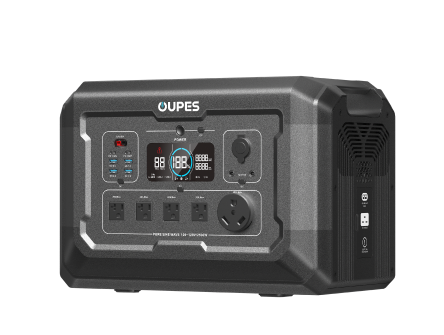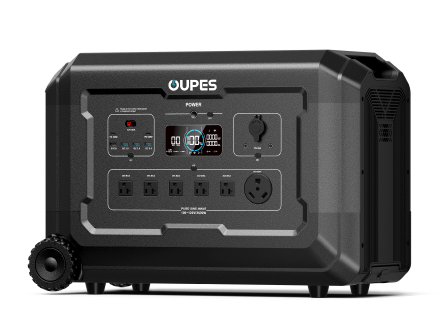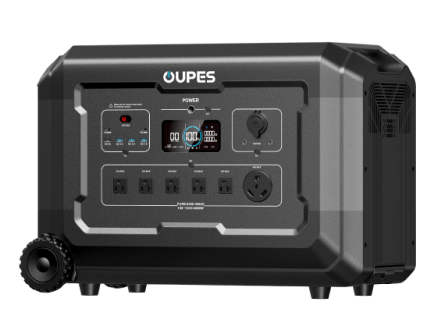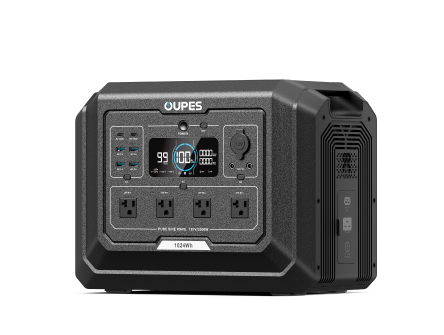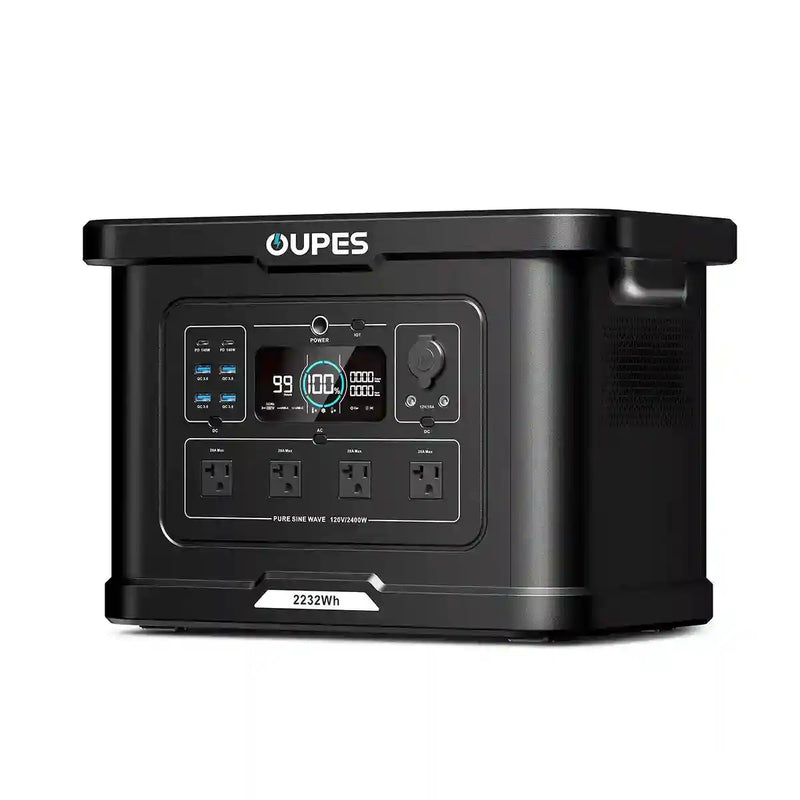
Solar power stations have emerged as powerful allies in our pursuit of sustainable, off-grid, and emergency energy solutions. But have you ever wondered what actually gives electricity to a solar power station? While these systems seem simple on the outside—just plug in and power up—their inner workings are a fascinating blend of advanced technology and natural energy conversion. Whether you're a curious homeowner, a camper, or preparing for emergencies, understanding the core components behind your solar power station is both practical and empowering.
In this article, we’ll break down the key elements that produce and store electricity in a solar power station. By the end, you'll have a crystal-clear understanding of how these systems capture sunlight and convert it into usable power for your devices, appliances, and homes.
The Role of Solar Panels in Electricity Generation
At the heart of any solar power station lies its most iconic component: the solar panel. These sleek, glassy panels are responsible for capturing sunlight and transforming it into electricity through a process called the photovoltaic effect. Each panel consists of many solar cells, typically made from silicon, which is a semiconductor. When sunlight hits these cells, it excites the electrons, creating a flow of electrical current.
The electricity generated by solar panels is direct current (DC), which means it flows in a single direction. Most portable or home backup solar generators like those from OUPES are designed to work with solar panels that produce DC output efficiently. However, on their own, solar panels cannot store energy or convert it into the alternating current (AC) that most household appliances require.
Therefore, the primary role of solar panels is to act as energy harvesters. Their placement, orientation, and exposure to sunlight greatly impact how much electricity a solar power station can generate. Optimal conditions—such as positioning the panels toward the sun during midday—can significantly increase output.
Advanced solar power stations are often compatible with various types of solar panels, including rigid, foldable, and portable ones. Choosing the right panel type and wattage ensures the solar power station receives adequate power for charging and operation.
In short, solar panels are the first step in generating electricity. Without them, a solar power station cannot capture or produce energy from sunlight. But capturing energy is only the beginning—the electricity must then be stored, managed, and converted.
Battery Storage: Powering Your Station After the Sun Sets
Solar power would be unreliable if it only worked during the day. That’s where the battery comes in—a vital part of what gives a solar power station its true utility. The energy generated by solar panels during the day is stored in high-capacity batteries, allowing you to access power at night, during cloudy weather, or in emergencies.
Most modern solar power stations use lithium iron phosphate (LiFePO4) batteries because of their long lifespan, safety, and deep cycle capabilities. These batteries can charge and discharge thousands of times with minimal degradation. For example, OUPES solar generators are equipped with durable battery systems that support extended use and fast charging from solar inputs.
The battery's job is to store the DC electricity generated by the panels and hold it until you need it. The capacity of the battery, usually measured in watt-hours (Wh) or kilowatt-hours (kWh), determines how much energy your solar power station can deliver over time. A larger capacity means you can run more appliances or power them for longer periods.
Battery management systems (BMS) are also crucial. These integrated systems protect the battery from overcharging, overheating, or discharging too much—issues that could shorten its life or cause malfunctions. A good BMS also ensures efficient and safe charging from solar panels or other sources like wall outlets.
Without a battery, your solar power station would only work when the sun is shining. With a battery, you unlock the full potential of portable, reliable, and flexible energy use anytime and anywhere.
Inverters: Making Electricity Usable for Everyday Devices
Once electricity is stored in the battery, it's still not ready to power most of your home appliances or electronics. That’s because it’s stored as DC electricity, while most devices in your home require alternating current (AC) electricity. This is where the inverter comes into play—another indispensable part of a solar power station.
An inverter converts the DC electricity stored in the battery into AC electricity, typically at 120V or 240V depending on the application. This makes it possible to plug in everything from laptops and lights to refrigerators and even power tools. The better the inverter, the more stable and efficient your power supply will be.
High-quality inverters offer pure sine wave output, which mimics the electricity supplied by utility companies. This is especially important for sensitive electronics that can be damaged by lower-quality modified sine wave inverters. OUPES solar power stations, for instance, use pure sine wave inverters to ensure compatibility with a wide range of devices.
The inverter’s wattage rating determines how much power you can draw at any given moment. For example, a 2,000W inverter can run most household appliances, but if you try to exceed its capacity, the system may shut down or overload. Some stations also include a surge rating, allowing for short bursts of extra power when starting high-draw appliances like air conditioners or pumps.
With the help of the inverter, your solar power station becomes a true substitute for grid power—capable of supporting you during blackouts, camping trips, or off-grid living.
Charge Controllers: Regulating the Power Flow
While solar panels, batteries, and inverters get most of the attention, there's another critical component in the system: the charge controller. This device regulates the flow of electricity between the solar panels and the battery, ensuring optimal charging and preventing damage to the battery.
Without a charge controller, batteries could be overcharged, leading to overheating, reduced capacity, or even failure. Charge controllers manage voltage and current from the panels to match what the battery can safely accept. This protects your investment and extends battery life.
There are two main types of charge controllers: PWM (Pulse Width Modulation) and MPPT (Maximum Power Point Tracking). MPPT controllers are more efficient, particularly in varying weather conditions or partial shade, as they adjust the electrical load to maximize power harvesting from the solar panel.
Modern solar power stations, including those from OUPES, often integrate MPPT charge controllers, allowing for faster and more efficient charging even when sunlight is inconsistent. These controllers also provide information on charging status, power input, and system health through LED displays or mobile apps.
In essence, the charge controller acts as the brain between the solar panel and the battery, constantly balancing inputs to prevent inefficiencies and ensure a smooth operation. It’s a small but vital piece of the overall puzzle of what powers your solar generator.
Supplemental Charging Options for Flexibility
Although the primary source of electricity for a solar power station is the sun, most systems—especially high-end ones—offer multiple ways to recharge. This enhances their reliability, especially during long periods of cloud cover or in emergencies when you need power quickly.
In addition to solar panels, many units allow recharging through AC wall outlets or 12V car ports. Wall charging is typically faster and useful when sunlight is not available. Car charging, on the other hand, offers flexibility when you’re on the road. OUPES power stations, for instance, support all three options, giving users peace of mind wherever they are.
Some stations also allow dual charging—simultaneously using solar and wall input to reduce downtime. This is particularly useful for larger units or when preparing for incoming storms or outages. Fast-charging technologies, such as built-in MPPT combined with high-efficiency AC charging circuits, can significantly reduce the time it takes to top off your battery.
Supplemental charging options ensure that your solar power station is not just solar-dependent but truly adaptable. Whether you're dealing with multiple cloudy days or prepping for a disaster, having more than one way to recharge adds resilience to your energy strategy.
Conclusion
So, what gives electricity to a solar power station? It's the synergy between several key components—solar panels to collect sunlight, batteries to store energy, inverters to convert it, and charge controllers to manage the flow. Each piece plays an essential role in delivering reliable, clean, and portable power to your devices and appliances.
Understanding how these elements work together helps you get the most out of your solar power station, whether you’re living off-grid, prepping for emergencies, or just want more control over your energy usage. With brands like OUPES leading the way in innovation and reliability, now is the perfect time to embrace solar technology and harness the power of the sun.

